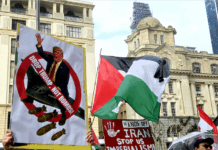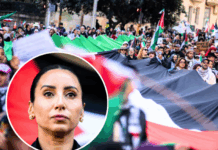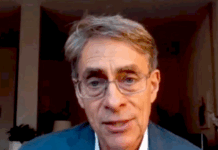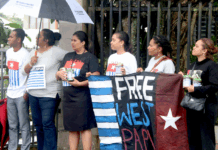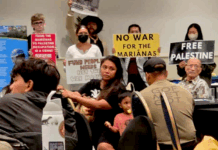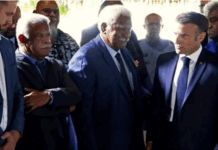
Report by Pacific Media Watch
Item: 9498
David Robie
France detonated 193 nuclear tests in the South Pacific, at Moruroa and Fangataufa atolls, before halting the tests in 1996 in the face of Pacific-wide protests. On 10 July 1985, French secret agents bombed the Greenpeace flagship Rainbow Warrior in Auckland Harbour, killing photographer Fernando Pereira, in a futile bid to stop a protest flotilla going to Moruroa. Journalist David Robie, who was on board the Rainbow Warrior for more than 10 weeks of her last voyage, coming ashore in Auckland just two days before the bombing, told his story in the book Eyes of Fire. Here he reflects on the 20-year legal struggle to prevent the French spies from gagging reportage of their guilty plea from public television and the lingering secrecy about the health legacy of nuclear tests in the Pacific.
SYDNEY: (Pen Sydney/Pacific Media Watch): EXCERPT: This seems to be a remarkable year of memories and reflection for freedom of speech and bearing witness struggles in the Pacific region. The townsfolk and children of the remote Timor-Leste border town of Balibó have recently marked the 40th anniversary of the murder of five young Australian-based television newsmen dubbed forever as the Balibó Five.

On 16 October 1975, the five journalists – Greg Shackleton, Gary Cunningham (New Zealand), Tony Stewart, Malcolm Rennie and Brian Peters (both British) from channels Seven and Nine – were reporting on Indonesian special forces incursions into independent Timorese territory.
They were brutally killed with impunity. Weeks later, a sixth journalist from Australia, Roger East, who ventured to Timor-Leste to investigate the murders and set up an independent Timorese news agency, was himself executed by the invading Indonesian forces on 8 December 1975. Their fate has been told in the compelling 2009 Robert Connolly film Balibó.
But the impunity lingers on, not only for the journalist atrocities but for more than 150,000 Timorese victims of the 24 years
of Indonesian occupation.
In July, President Joko Widodo of Indonesia appeared to have turned a new leaf on media relations over the two Melanesian provinces that collectively make up the West Papua region by declaring an “open door” visa policy for foreign journalists. This is far from the reality. Māori Television recently sent a television crew there – the first New Zealand TV journalists to visit West Papua in more than 50 years – to bear witness.
But their stories, such as a report on a New Zealand aid-assisted thriving kumara (sweet potato) industry in the Baliem Valley, were hardly a testimony to media freedom.
Bearing witness
For me, as a journalist and media educator who has worked in the Pacific region for almost four decades, the issue of media freedom and bearing witness that has outweighed all others is the bombing of the global environmental Greenpeace flagship Rainbow Warrior by French secret agents on 10 July 1985 and the death on board of Portuguese-born Dutch photojournalist Fernando Pereira.
The 30th anniversary of the sabotage, which was New Zealand’s first and only example of state terrorism, came and went in a rather muted fashion (compared with events marking 20 years, for example).
Source: Pacific Media Watch 9498



